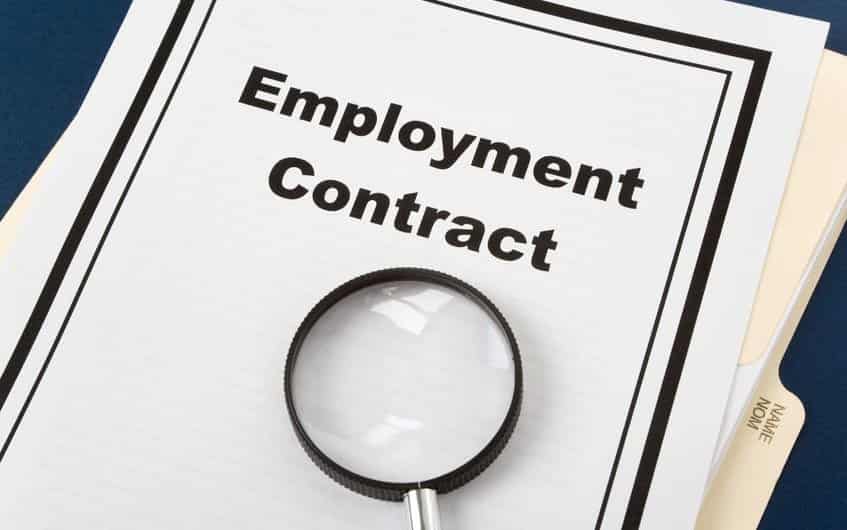Are you an individual or a small business looking to have another party sell goods on your behalf? Wanting to ensure you maintain ownership of your goods in case of default?
A commercial Consignment Agreement may be the solution for your business.
By maintaining ownership of your goods until they are sold, while allowing the other party possession of the goods, you can ensure that your business has the best legal protection possible.
If you want to learn more about how a commercial consignment can assist your business, this post is just for you.
Read along.
Table of Contents
What is a Consignment Agreement?
Let’s begin with the most pressing question: What is a Consignment Agreement, otherwise known as a Consignment Sales Agreement or Consignment Inventory Agreement?
A Consignment Agreement involves two parties; the consignor and the consignee.
The consignee is someone who agrees to sell goods on behalf of the owner of those goods (‘the consignor’).
The consignee agrees to sell the goods because they will generally receive some form of profit in exchange for their services.
In other words, the consignor supplies goods to the consignee for the purpose of selling, storing or for the resale of those goods. The consignor will retain ownership of the goods until they are sold, despite the consignee possessing the goods.
If you are considering selling goods on consignment, it’s essential to be aware that there are two types of agreements. The first one is ‘sale or return’ and the second an agency sale.
We have set out the differences for you below.
1. Sale or Return
A sale or return agreement is essentially a promise that a consignee will buy the goods from the consignor for an agreed price if they can find someone to purchase the goods.
After that transaction is complete, the consignee will resell the goods to the buyer they found. This means that the consignor retains ownership of the goods until the consignee finds a buyer.
But one thing to note is that if the consignee never finds a buyer, they are not obligated to buy the goods from the consignor.
Along with this, the price the consignee sells the goods for is often higher than the agreed price between the consignor and consignee. Because of this, the consignee gains a profit from the agreement.
Does this seem complicated? It doesn’t have to be because we’ve broken down a sale or return agreement into basic steps that you can follow:
- The consignor and consignee enter into a Consignment Agreement
- Then, the consignee looks for and, hopefully, finds a buyer
- Next, the consignee buys the goods from the consignor for the agreed price
- Lastly, the consignee resells the goods to the buyer
A sale or return agreement will likely have the following terms:
- Retention of title clause
- An agreed price for the goods once a buyer has been found
- If the buyer pays more than the agreed price, the consignee can keep the remaining amount
If the consignee is registered for GST, they must pay GST on the total sale price of the goods.
However, some conditions can make the consignee eligible for GST credits. The way GST applies to goods sold on consignment depends on:
- The nature of the consignment arrangement
- Whether or not the owner of the goods is registered for GST.
2. Agency Sale
Unlike a sales or return agreement, an agency sale does not involve the consignee purchasing the goods from the consignor.
Instead, an agent in an Agency Agreement agrees to sell the goods on behalf of the consignor in exchange for a commission fee. The commission can be a flat rate or a percentage of the final sale price.
An agent can enter into legal relationships on behalf of the consignor through an agreement. As a result, the agreement sets out the scope and authority the agent has in representing the consignor.
Although an agent must act in the best interest of a consignor, it’s essential to set out in the agreement who can control the sale price. This is to ensure the consignor gets the outcome they want.
One last key information to know is that an agent only has to pay GST for their commission and not for the sale. However, certain circumstances require the owner to pay GST for the sale.
The owner of the goods is liable to pay GST on the sale if:
- they are registered for GST, and
- they make the sale in the course of running their business.
How does a commercial Consignment Agreement work?
Now that you understand what a commercial assignment is, are you asking yourself, ‘how does a commercial consignment work?’
Great question.
As we’ve already discussed, a consignment is when the consignor delivers their property to the consignee so that the consignee can sell the property. However, there are other elements to consider if you want to use a Consignment Agreement.
Did you know that while the property is in the consignee’s possession, the consignor still retains ownership of the property? Yes, that’s right.
The property, or goods, will only become the final customer’s property after the consignee sells it.
This means that a consignment essentially operates as a consignment contract between the consignor and consignee.
With this in mind, it means that the elements of a binding contractual agreement are in place, and the terms and conditions that you and your consignee put in place will be binding.
The terms of the Consignment Agreement will outline that you’ll remain the owner of your goods until your consignee confirms the goods have been sold to a customer.
This means you can request that your goods be returned to you at any point during the commercial relationship. For example, one such term would outline that you’ll remain the owner of your goods until your consignee confirms that the goods have been sold to another customer.
So to be a ‘commercial consignment’, the contract must meet the criteria as per the Personal Property Security Act 2009 (Cth) (‘PPSA’). The contract will be a commercial consignment if:
- The consignor retains an interest in the goods that have been delivered to the consignee.
- They delivered the goods for the purposes of sale, lease, or another form of disposal.
- Both the consignor and consignee deal with these goods in the ordinary course of their businesses.
When do I need a Consignment Agreement?
An individual, business or consignor can use a Consignment Agreement.
So if you’re a consignor or a business and are looking for another business to sell your goods to third parties, getting a well-drafted Consignment Agreement would be the right path for you.
Getting into any commercial relationship can be tricky. However, if you have a well-written Consignment Agreement, you can be sure that it will protect any future relationships between you and your consignee.
Consignment Agreements reduce liability and clearly outline the roles and responsibilities of both your business and its customers.
What’s included in a Consignment Agreement?
You can include several clauses in the Consignment Agreement to protect your business.
However, if you’re unsure of which clauses to include in your Consignment Agreement, some common clauses you can have are:
- Dispute resolution
- Warranties and liabilities
- List of consigned items
- Ownership and risk
- Duration of agreement
- Termination
- Return of products not sold
- Payment protection
- Governing law and equitable relief
- Risk of loss
- No implied waiver
Not every clause listed above must be included in a Consignment Agreement; however, we’ve provided additional information on the most important elements below.
Let’s go through them.
1. Identifying the parties – formalities
There is usually a section in a Consignment Agreement that identifies the parties to the contract.
The consignor is the person who provides the goods. The consignee is the person who receives and sells the goods.
Consignment Agreements usually include a recitals section, in which the parties explain the nature of the transaction and why they are entering into it.
2. Details of the consigned goods
Details of the consigned goods should be included in your Consignment Agreement, including:
- How many units of each item you will provide
- The agreed retail sale price
- Serial numbers
- Specific model numbers
- Pictures of each item in the agreement – makes it clear which goods the agreement is referring to and avoids disputes in the long run
3. Legal title of goods and risk
Legal title to the goods must be outlined in the Consignment Agreement.
This means the consignor retains ownership of the goods until the consignee sells them to an end-user or third party.
Even though the consignor retains ownership of the goods, the consignee must keep the goods safe while in their possession.
By doing this, the consignee will make sure that the consignor’s goods are taken care of.
4. Liability releases
In your Consignment Agreement, you may also include a term that releases the consignee from liability if the product becomes damaged due to:
- An event that is outside the control of the consignee to avoid liability
- Fire
- Weather – storm or flooding
- Theft
5. Commission
In the Consignment Agreement, you should clearly state the commission for each item.
The most precise and safest way to represent this is to have percentage amounts next to pictures.
Any fees or expenses outside of the commission percentage should be specified in the contract and under what conditions they will be paid.
As part of your Consignment Agreement, you should also specify how the consignor is notified once an item has been sold.
6. Information about unsold goods
What happens if some items in your Consignment Agreement don’t get sold?
This could very well happen, so it’s important to include this scenario in your Consignment Agreement. This is a great way to set out what each party are responsible for.
For example, consider including the following information:
- What happens when an item doesn’t get sold
- How items should be returned by the consignee back to the consignor in this situation
- If you wish to extend the terms of the consignment
- If the consignor doesn’t pick up the items after a specified period of time, for example, 50 days, they will become the property of the consignee
- Who will bear the costs of returning the items that don’t get sold
7. Governing law and equitable relief
The governing law and equitable relief clause will allow both parties to implement procedures when conflicts or disputes arise.
8. Risk of loss
This clause will be good to include in the Consignment Agreement as it will remind the consignee of their responsibility for the good or service while it’s in their care.
9. No implied waiver
This clarifies that if either party breaches any obligation under the agreement, this doesn’t mean that any future rights to enforce any obligations are also waived.
What are the benefits of a commercial Consignment Agreement?
There are a range of benefits from using a Consignment Agreement instead of selling the goods yourself. The benefits for a consignor include:
- Provides the consignor with a security interest – A security interest will secure the consignor’s rights if the consignee defaults on their obligations, such as through becoming insolvent. To ensure you receive this protection, make sure to register your interest under the terms of the PPSA
- Provides a mechanism for the sale of high value or unusual goods
- Allows for consignees to have possession to sell the goods without causing significant risk to the consignor
- Another party will do the majority of the work finding a buyer
- If a buyer isn’t found, they can organise for their goods to be returned to them
- There are no restrictions on what goods can be sold using a Consignment Agreement
- They will retain ownership of their goods while a buyer is being found
- In the case of an agency sale, they can still maintain control over the final sale price of the goods
Other important questions
1. Why have a written Consignment Agreement?
A consignment arrangement should be a written agreement to prevent disputes and conflicts from arising.
When the consignment is not written, it would be difficult to gain legal advice from a lawyer if any conflicts arise and your legal needs won’t be met.
In most cases, problems arise from a lack of understanding and confusion over the arrangement.
Having your Consignment Agreement in writing reduces the chances of errors and misunderstandings while clearly defining your rights and obligations.
2. What should a Consignment Agreement include?
A Consignment Agreement needs to establish the relationship between the consignee and consignor. It needs to include:
- The formalities – identifying the parties
- Details of the consigned goods or services
- Title of goods and services
- Images of the goods
- Releasing liabilities – outlining the different circumstances
- Commissions and payment
- What happens when the goods and services don’t get sold
3. Is a Consignment Agreement the same as a distribution agreement?
The short answer is no.
A distribution agreement is a contract that sets out the terms and conditions of the distribution arrangement between a manufacturer or supplier of a product (‘Supplier’) and an overseas distributor that wants to purchase the Supplier’s goods to sell (‘Distributor’).
On the other hand, a Consignment Agreement is a legal document for a Consignor to appoint a Consignee for the sale of goods.
Conclusion
If you’re looking to sell your goods through another party while ensuring that you are significantly protected, a commercial Consignment Agreement is just what you need.
Whether you choose to do this through ‘sales or return’ or an agency, the Consignment Agreement provides the necessary conditions to protect you and your products.
If you are interested in using a Consignment Agreement, but you’re unsure how to create one, use our Consignment Agreement template and protect yourself in under 10min.

Get a free legal document when you sign up to Lawpath
Sign up for one of our legal plans or get started for free today.




